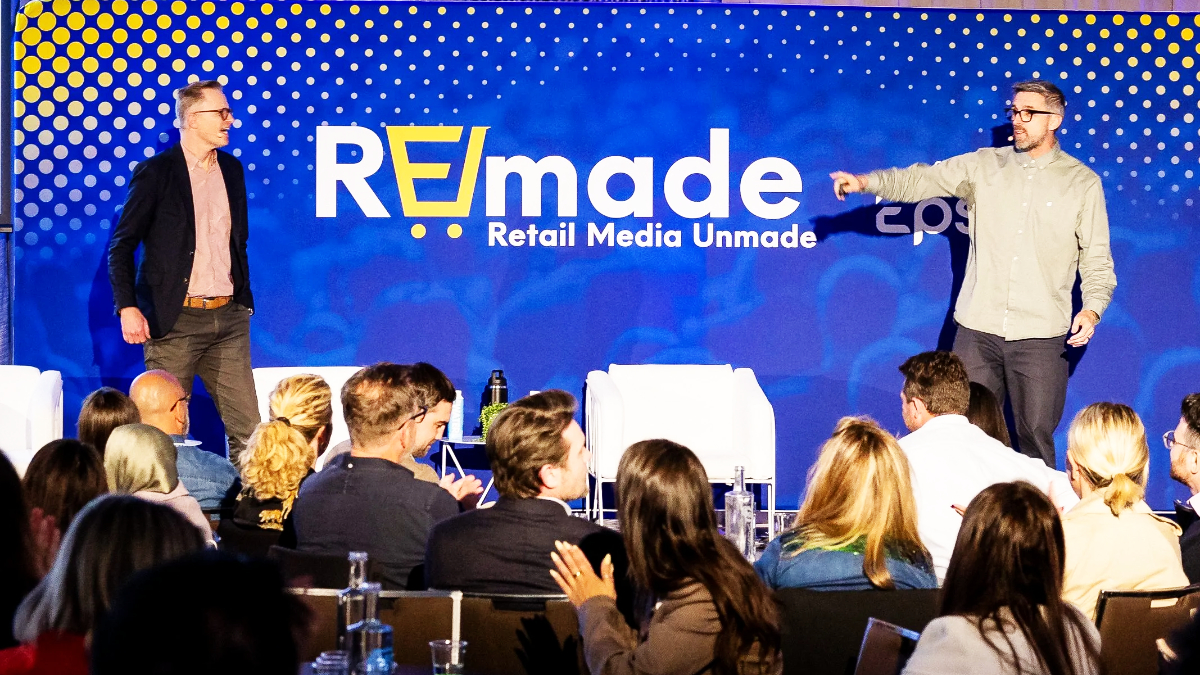This article first appeared in marketing publication SmartBrief here
Experts examine AI trends in retail media, which was slow to gain widespread adoption but has been “flying off the shelves” as more platforms and advertisers use it.
Spending in retail media networks shows no sign of slowing down.
Retail media spending has grown from $30 billion in 2021 to an estimated $60.8 billion this year and is projected to grow to more than $100 billion by 2029 (per eMarketer). This year alone, IAB forecasts retail media spending will double the rate of overall ad spend and reach 15.6% growth.
And just like it has in nearly all other aspects of marketing, AI is at work in retail media.
“AI can be a powerful tool on a number of key objectives, including targeting, personalization, automation, efficiency, insights and planning,” says Angus Frazer, co-founder of Sonder, which works with owned media brands. “When fed a rich first-party data set, AI can match objectives against data-enriched media placements to create tailored and optimized plans in real time.”
Ben Johnsen, who leads strategy and planning for ad agency Kiosk, adds, “The ability to map out the consumer journey and interaction history – from initial touch to final purchase – also can be used for predictive modeling of future purchases.”
Frazer said that, while the larger retail media networks, such as Amazon and Walmart, have incorporated AI, the technology has lagged behind other paid media in adoption. The greater focus has generally been on how AI can improve the retail experience and efficiencies.
One area where AI is giving retail media a boost is through contextual targeting, with adtech companies like Wurl being able to tie emotion to contextual targeting, Johnsen says.
A simple search echoes the above and other trends – such as from eMarketer and Kevel – of using AI in retail media:
- Marrying in-store and online data
- Incorporating inventory data into ads
- Data integration and privacy-compliant targeting
- Improved in-store experiences and loss prevention
Johnsen notes that the growth in the number of retail media networks – more than 300 RMNs, by one account – will create a new type of “currency” that advertisers must consider.
“As the number of RMNs grows, the fit and quality of their audiences will become currency for marketers – whose data will reign supreme,” he says. “Brands such as Costco, with strong customer loyalty and trust, may have an advantage.”
What’s on “the next truckload” for AI?
The next step for AI in retail media is generative AI, says Ashwini Karandikar, 4As lead for media, technology and data, and Jeremy Lockhorn, who leads the association’s strategy, insights and innovation.
“Generative AI is the creative director of the next era,” they say. “It’s moving beyond just finding the right customer to actively building the assets that will reach them.”
They cite Amazon as a prime example, and add that the ecommerce marketplace is enabling brands to use generative AI on just one product image to create lifestyle images and ad-ready videos.
Walmart, Karandikar and Lockhorn explain, is using AI-powered search for users to use a prompt like “barbecue for 12” and then generate a shopping list that includes everything from utensils to the necessary food.
Kiosk’s Johnsen says he eventually sees “AI technologies in retail media providing greater insight into full funnel media investment strategies, particularly through how the industry perceives the interaction of brand — and performance-based media.”
Another trend to keep in mind, say the 4As Karandikar and Lockhorn, is how brands can influence the shopping AI agents that consumers use.
“The challenge for retail media networks and brands will be figuring out how to advertise to the algorithm itself,” they say.
“It won’t be about a sponsored product ad on a search results page; it will be about getting your brand’s data, value proposition and unique selling points into the ‘mind’ of the AI agent. Retail media will become a B2A business — Business to AI — where brands compete for influence over agents.”
Retail media continues to change
With or without AI, retail media will continue to evolve.
Sonder’s Frazer also sees networks and brands tapping in more to the physical side of retail media.
“As retail media networks evolve, we’ve seen clients increasingly move towards an omnichannel offering, encompassing digital and physical media. This is most evident for store-based channels, which have previously been underutilized but are not becoming front and center due to a greater understanding of their value,” he says.
Kiosk’s Johnsen sees a trend in using connected TV for retail media, citing recent partnerships between Instacart and NBCU and Walmart and Roku. Like Frazer, Johnsen sees growth in physical locations for retail media, with Walmart’s plan to expand its fuel and convenience stations by up to 450 locations.
“Those extensions open even more opportunities for non-endemic advertisers and off-site engagement to a loyal customer base. Such opportunities are promising in a world of cookie deprecation and stricter consumer privacy rules,” he says.
As fast as retail media is growing, combined with the continued evolution of AI, that trip to the mall – or your browser – will continue to be a vastly different experience year after year.





